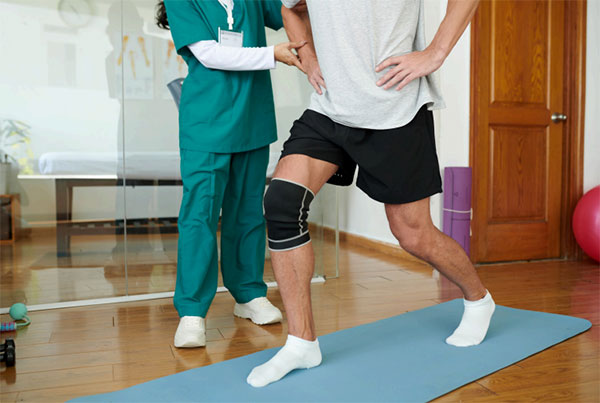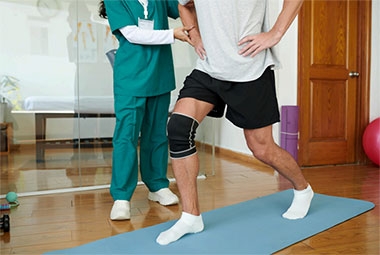
Every October, National Physical Therapy Month highlights the importance of movement and rehabilitation in restoring health. For patients recovering from robotic hip and knee replacement, physical therapy is a vital part of achieving long-lasting function and independence. In this post, let’s explore how PT accelerates recovery after robotic joint replacement.
The Role of Rehabilitation After Robotic Hip and Knee Surgery
Robotic-assisted joint replacement offers enhanced accuracy, smaller incisions, and a faster return to activity compared to traditional surgery. However, even with these advantages, the body must adapt to the new joint. Physical therapy plays a critical role in regaining mobility, improving strength, and ensuring proper alignment during the healing process.
Restoring Range of Motion and Strength
After surgery, stiffness and muscle weakness can limit normal movement. Physical therapists use guided exercises to gradually restore flexibility and strengthen supporting muscles. For knee replacement patients, this often includes improving quadriceps and hamstring function. For hip replacement patients, therapy focuses on building hip stability while protecting the new joint.
Improving Balance and Preventing Complications
Robotic precision helps ensure better joint placement, but patients still need to re-train their balance and coordination. Physical therapy provides safe, progressive routines that reduce the risk of falls and protect the surgical site. Consistent PT also lowers the likelihood of complications such as scar tissue buildup or long-term stiffness.
Customized Recovery Plans for Every Patient
No two patients heal at the same pace. Individualized physical therapy programs are created that match the patient’s goals—whether that’s returning to work, sports, or simply walking comfortably. Collaboration between the surgeon and therapist ensures that recovery milestones are achieved safely and efficiently.
The Lasting Benefits of Physical Therapy After Joint Replacement
Patients who commit to therapy after robotic joint replacement often enjoy smoother movement, improved joint longevity, and higher overall satisfaction with their surgery. By restoring proper function and teaching safe movement strategies, physical therapy maximizes the benefits of advanced robotic technology.
Physical therapists play a crucial role in recovery after robotic-assisted hip and knee replacement. Their expertise helps patients regain mobility, restore strength, and build confidence as they return to daily activities. With personalized rehabilitation and consistent support, patients can embrace life again with restored mobility.
AUTHOR: Robert J. Avino M.D. is a board-certified and fellowship-trained adult hip and knee reconstruction surgeon at Palm Beach Orthopaedic Institute. Dr. Avino specializes in robotic-assisted hip and knee replacement using the minimally invasive direct anterior approach to hip replacement, across Palm Beach County in South Florida.










